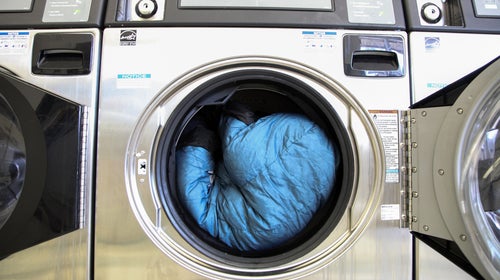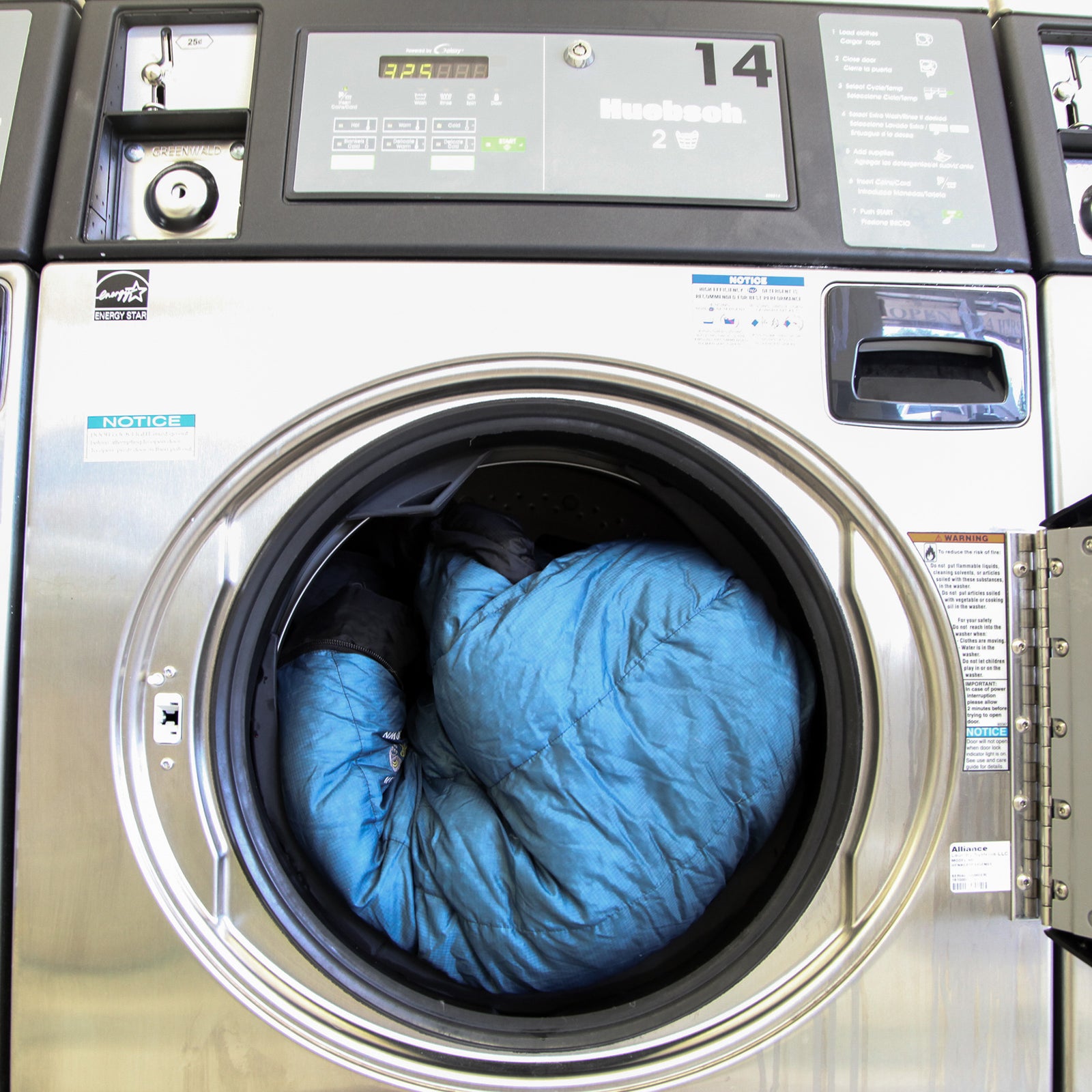Have you ever cleaned your sleeping bag? Or has it been ten years since it’s been thoroughly washed? Chances are it’s time to give that thing a deep clean, especially before you put it away after the summer camping season, since any trapped moisture will fester in storage. You can get it professionally laundered—tech cleaners like in Seattle, Washington, or in Truckee, California, will do that for you, either in person or by mail. But it’s also easy to do it yourself. Here’s what you’ll need.
The Process
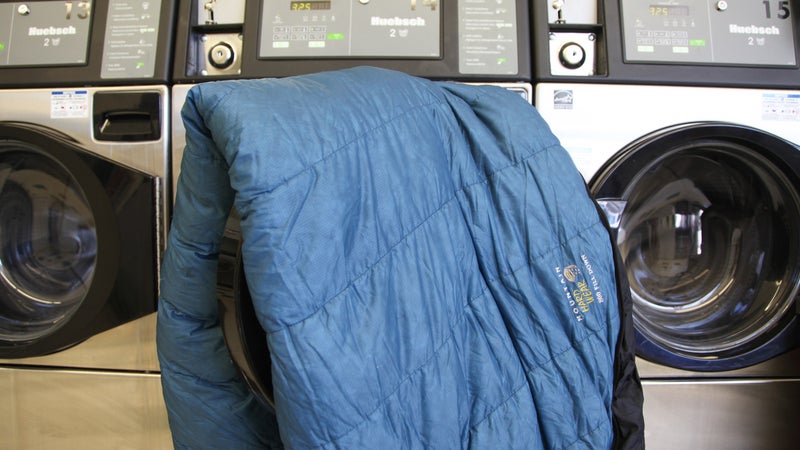
Step 1: Head to a Laundromat
Your home washer and dryer aren’t quite burly enough to clean your sleeping bag, so your best bet is to go to a laundromat for industrial-sized equipment and a front-loading washer. Never use a top-loading washing machine with an agitator column—the bag could get twisted around it and rip.��
“If you’re using a zero-degree or alpine bag with large baffles, hefty loft, or high-quality insulation, I always recommend putting it in a larger washer,” says Kipp Godfrey, manager at Rainy Pass Repair. “A big drum will help expel water. If you overstuff your home washer or dryer, the machine won’t function as efficiently.”
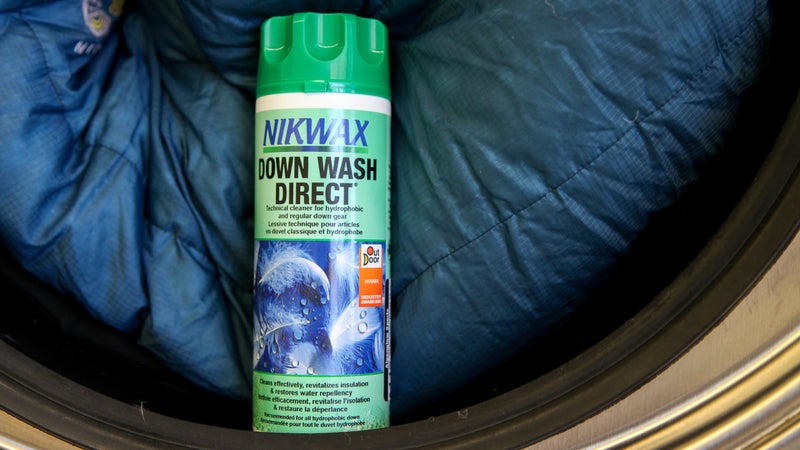
Step 2: Use the Right Cleaner
Never dry-clean your sleeping bag, and never wash it with regular laundry detergent. “Where people consistently go wrong with DIY cleaning is using the right cleaner,” Godfrey says. “If you use a standard detergent or household cleaner, you could end up with down clumping.”
Be sure to read the care instructions. If you’ve ripped out the tag, check the manufacturer’s website for cleaning guidelines. If it’s a down sleeping bag, you’ll want to wash it with a down cleaner formulated for down feathers and fibers, like or . If it’s a synthetic bag, use or .��
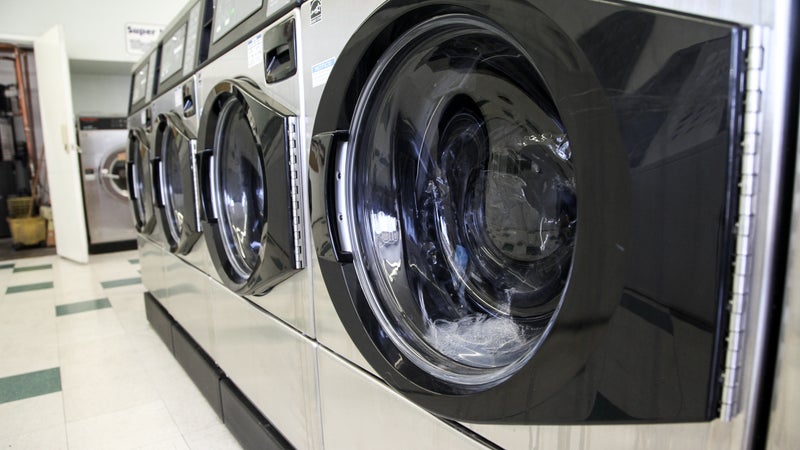
Step 3: Wash It
The care instructions on the bag should cover the basics of water temperature and spin cycle, but generally, you’ll want to use either cold or warm water—never hot—and put it through a second rinse cycle.��
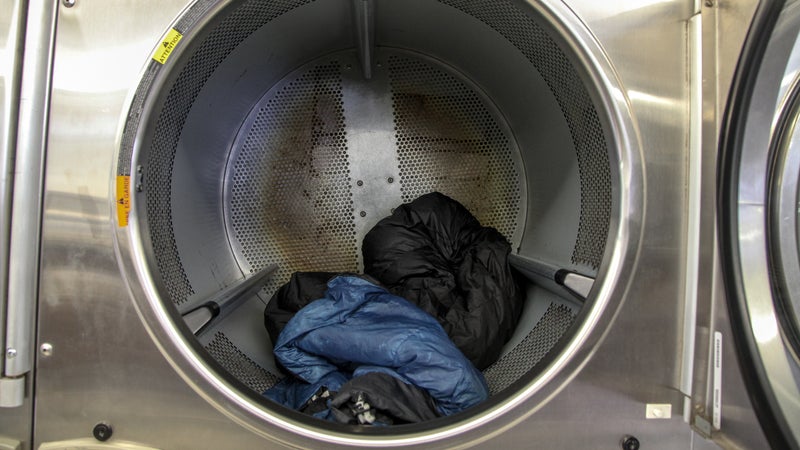
Step 4: Dry It
Once it’s been washed and rinsed, transfer the bag to the dryer on a low heat setting. Make sure the lint filters are clean. If it’s a down bag, toss in a couple tennis balls to maintain the loft. For synthetic bags, you don’t need the tennis balls.��
“Drying takes a long time,” Godfrey says. “This is why an industrial dryer is nice. You’ll get better heat transfer with lower temperatures.”
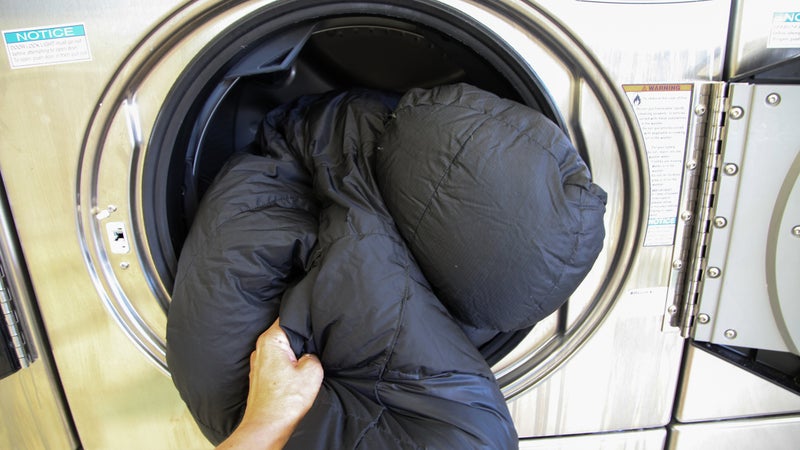
Step 5: Spot Cleaning and Hand Washing
There’s really no need to spot-clean your bag; you’re better off just washing the whole thing. But if your bag has one pesky stain or mark, you can spritz and dab it with a cleaner like .��
If an industrial washing machine isn’t available, you can, in a pinch, hand wash your sleeping bag in a large basin or tub filled with soapy water. Pour a small amount of cleaner into warm water, and use your hands to wash and rinse the bag. Air drying works if that’s your only option, but know that it’ll take quite a long time to get the bag completely dry.
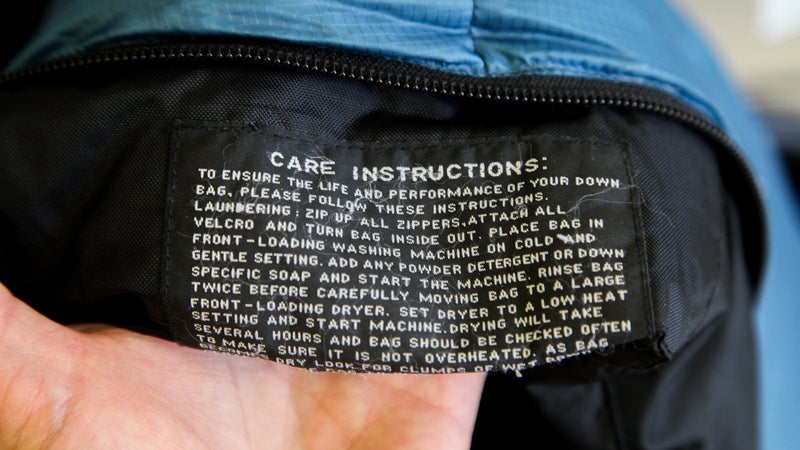
Step 6: Storing Your Bag
Now your sleeping bag is all clean and dry. That wasn’t so hard, right? To maintain its longevity and loft, store the bag as loosely as you can. Never keep a bag jammed into that tiny stuffsack built for backpacking trips. “The best way, if you have the space, is to lay the bag out and either hang it completely open or lay it out on top of something, like a sleeping pad or under a couch or bed,” Godfrey says. “If you don’t have room for that, at least use the enlarged sack so it’ll be loosely stuffed.”
